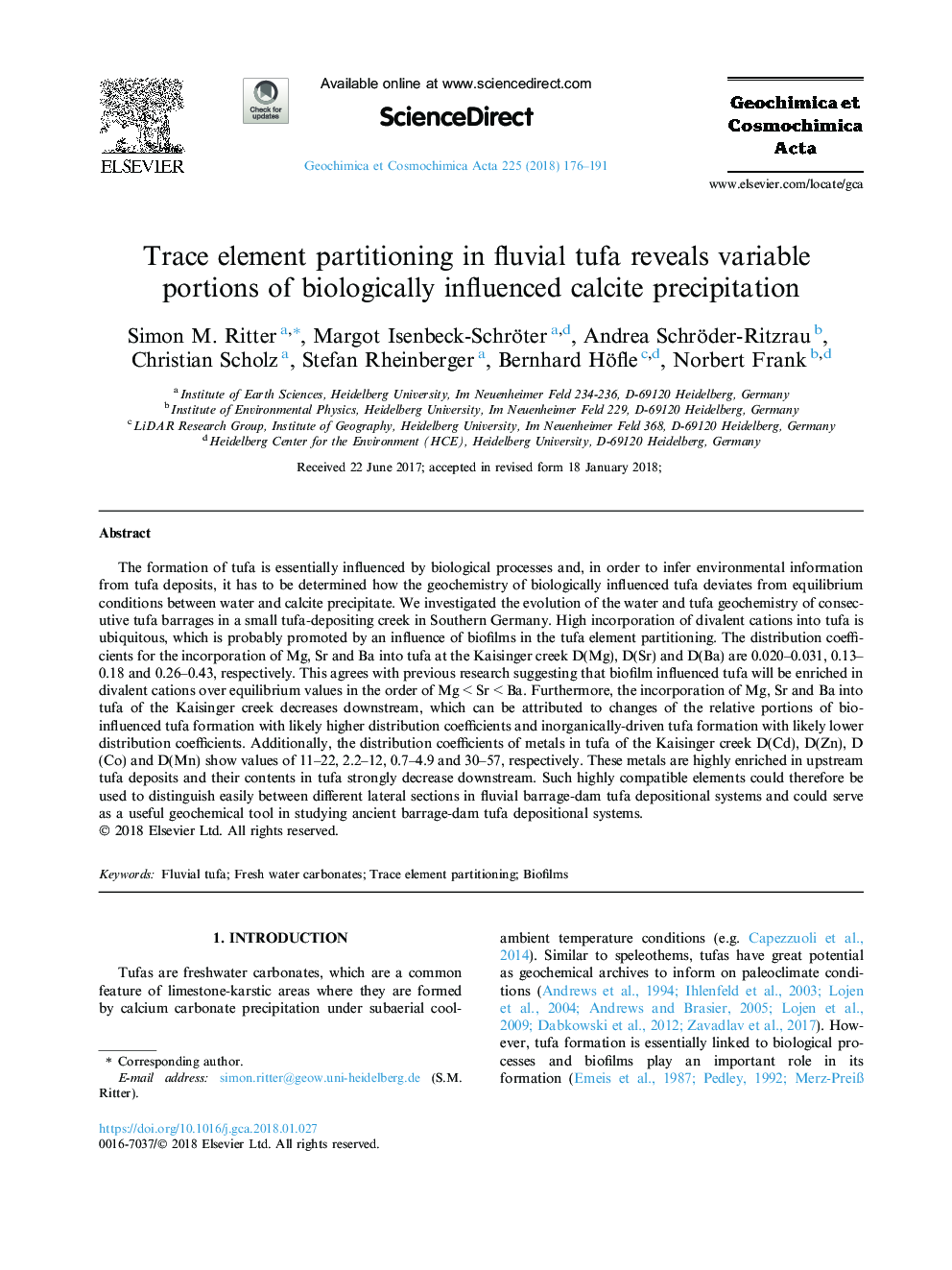| Article ID | Journal | Published Year | Pages | File Type |
|---|---|---|---|---|
| 8910848 | Geochimica et Cosmochimica Acta | 2018 | 16 Pages |
Abstract
The formation of tufa is essentially influenced by biological processes and, in order to infer environmental information from tufa deposits, it has to be determined how the geochemistry of biologically influenced tufa deviates from equilibrium conditions between water and calcite precipitate. We investigated the evolution of the water and tufa geochemistry of consecutive tufa barrages in a small tufa-depositing creek in Southern Germany. High incorporation of divalent cations into tufa is ubiquitous, which is probably promoted by an influence of biofilms in the tufa element partitioning. The distribution coefficients for the incorporation of Mg, Sr and Ba into tufa at the Kaisinger creek D(Mg), D(Sr) and D(Ba) are 0.020-0.031, 0.13-0.18 and 0.26-0.43, respectively. This agrees with previous research suggesting that biofilm influenced tufa will be enriched in divalent cations over equilibrium values in the order of Mgâ¯<â¯Srâ¯<â¯Ba. Furthermore, the incorporation of Mg, Sr and Ba into tufa of the Kaisinger creek decreases downstream, which can be attributed to changes of the relative portions of bio-influenced tufa formation with likely higher distribution coefficients and inorganically-driven tufa formation with likely lower distribution coefficients. Additionally, the distribution coefficients of metals in tufa of the Kaisinger creek D(Cd), D(Zn), D(Co) and D(Mn) show values of 11-22, 2.2-12, 0.7-4.9 and 30-57, respectively. These metals are highly enriched in upstream tufa deposits and their contents in tufa strongly decrease downstream. Such highly compatible elements could therefore be used to distinguish easily between different lateral sections in fluvial barrage-dam tufa depositional systems and could serve as a useful geochemical tool in studying ancient barrage-dam tufa depositional systems.
Keywords
Related Topics
Physical Sciences and Engineering
Earth and Planetary Sciences
Geochemistry and Petrology
Authors
Simon M. Ritter, Margot Isenbeck-Schröter, Andrea Schröder-Ritzrau, Christian Scholz, Stefan Rheinberger, Bernhard Höfle, Norbert Frank,
